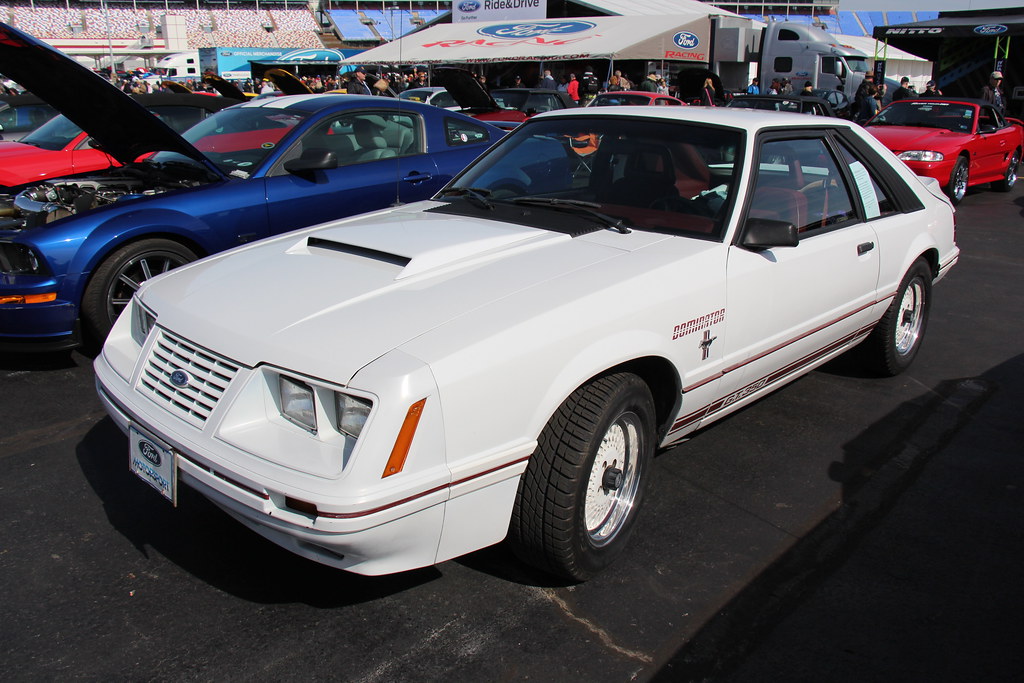
The Ford Mustang GT350 stands as an undisputed titan in the pantheon of American muscle cars. Born from an audacious partnership between Ford and the inimitable Carroll Shelby, this machine wasn’t merely a vehicle; it was a potent symbol of speed, style, and raw power that roared onto streets and tracks between 1965 and 1970. Its very existence redefined the muscle car era, proving that a popular pony car could be transformed into a formidable road and racing icon.
Beyond its well-known blistering acceleration and distinctive looks, the GT350 harbors a wealth of fascinating stories and intricate details that shaped its legendary status. From the behind-the-scenes struggles and strategic decisions made during its development to the subtle nuances of its early production, the journey of the GT350 is a testament to engineering prowess, racing ambition, and a relentless pursuit of performance. It became more than just a car—it became a symbol of American performance, rebellion, and automotive excellence.
Join us as we pull back the curtain on some of the lesser-known aspects of this automotive marvel, delving deep into the decisions, challenges, and innovations that forged the classic Shelby Mustang GT350. These are the details that truly illustrate how Shelby and Ford redefined an entire era of American motoring, crafting a machine whose influence resonates even today. Prepare to discover the meticulous craftsmanship and the compelling narratives behind one of the most beloved American performance cars of all time.
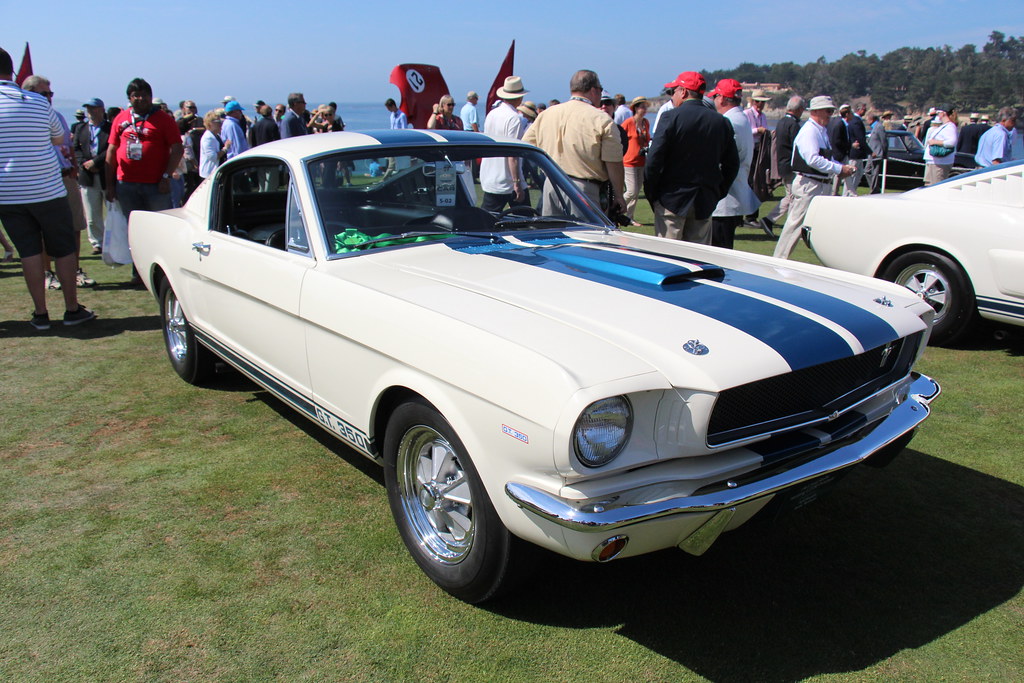
1. **Carroll Shelby’s Initial Skepticism**One of the most surprising facts surrounding the genesis of the GT350 is Carroll Shelby’s initial, profound reluctance to take on the project. Despite Ford’s Mustang already being a commercial success after its debut in April 1964, Lee Iacocca, then Ford’s division manager, harbored concerns. He feared the Mustang was rapidly earning a reputation as an “image car” rather than a serious performer, especially with the muscle car frenzy ignited by vehicles like Pontiac’s GTO.
To address this perception, Iacocca turned to Shelby, the celebrated racing luminary whose name was synonymous with motorsport triumphs through his work with the AC Cobra and the Daytona Coupe. Shelby, a man who had made his name racing and developing purpose-built sports cars, found the idea of transforming the relatively large, sedan-based Mustang into a road course performer rather unappealing. He wasn’t convinced it was a suitable platform for the kind of high-performance machine he was known for creating.
Recalling the conversation, Shelby famously stated, “In 1964, when Lee Iacocca said, ‘Shelby, I want you to make a sports car out of the Mustang,’ the first thing I said was, ‘Lee, you can’t make a racehorse out of a mule. I don’t want to do it.'” However, Iacocca’s response left little room for argument: “He said, ‘I didn’t ask you to make it; you work for me.'” This blunt exchange highlights the immense pressure and corporate will behind the GT350 project, forcing Shelby to reluctantly embark on a venture that would ultimately solidify his legend even further, proving that even a mule could indeed become a racehorse in the right hands.
Car Model Information: 2008 Ford Mustang GT Premium
Name: Ford Mustang
Caption: 2018 Ford Mustang GT 5.0
Aka: Ford T5 (Germany)
Manufacturer: Ford Motor Company
Production: March 1964 – present
ModelYears: 1965–present
Class: Unbulleted list
BodyStyle: Unbulleted list
Layout: Front-engine, rear-wheel-drive layout
Categories: 1970s cars, 1980s cars, 1990s cars, 2+2 coupés, 2000s cars
Summary: The Ford Mustang is an American automobile manufactured and marketed by Ford since 1964, as Ford’s longest nameplate in continuous production. Currently in its seventh generation, it is the fifth-best selling Ford car nameplate. The namesake of the “pony car” automobile segment, the Mustang was developed as a highly styled line of sporty coupes and convertibles derived from existing model lines, initially distinguished by its pronounced “long hood, short deck” proportions.
Originally predicted to sell 100,000 vehicles yearly, the 1965 Mustang became the most successful vehicle launch since the 1927 Model A. Introduced on April 17, 1964 (16 days after the Plymouth Barracuda), over 400,000 units were sold in its first year; the one-millionth Mustang was sold within two years of its launch. In August 2018, Ford produced the 10-millionth Mustang; matching the first 1965 Mustang, the vehicle was a 2019 Wimbledon White convertible with a V8 engine.
The success of the Mustang launch led to multiple competitors from other American manufacturers, including the Chevrolet Camaro and Pontiac Firebird (1967), AMC Javelin (1968), and Dodge Challenger (1970). It also competed with the Plymouth Barracuda, which was launched around the same time. The Mustang also had an effect on designs of coupes worldwide, leading to the marketing of the Toyota Celica and Ford Capri in the United States (the latter, by Lincoln-Mercury). The Mercury Cougar was launched in 1967 as a unique-bodied higher-trim alternative to the Mustang; during the 1970s, it included more features and was marketed as a personal luxury car.
From 1965 until 2004, the Mustang shared chassis commonality with other Ford model lines, staying rear-wheel-drive throughout its production. From 1965 to 1973, the Mustang was derived from the 1960 Ford Falcon compact. From 1974 until 1978, the Mustang (denoted Mustang II) was a longer-wheelbase version of the Ford Pinto. From 1979 until 2004, the Mustang shared its Fox platform chassis with 14 other Ford vehicles (becoming the final one to use the Fox architecture). Since 2005, the Mustang has used the D2C platform, unique to the Mustang.
Through its production, multiple nameplates have been associated with the Ford Mustang series, including GT, Mach 1, Boss 302/429, Cobra (separate from Shelby Cobra), and Bullitt, along with “5.0” fender badging (denoting 4.9 L OHV or 5.0 L DOHC V8 engines).
Get more information about: Ford Mustang
Buying a high-performing used car >>>
Brand: Ford Model: Mustang
Price: $16,785 Mileage: 81,832 mi.
Read more about: 10 Quarter-Mile Kings: Uncovering the Amazingly Fast and Historically Affordable Muscle Cars of the 1960s
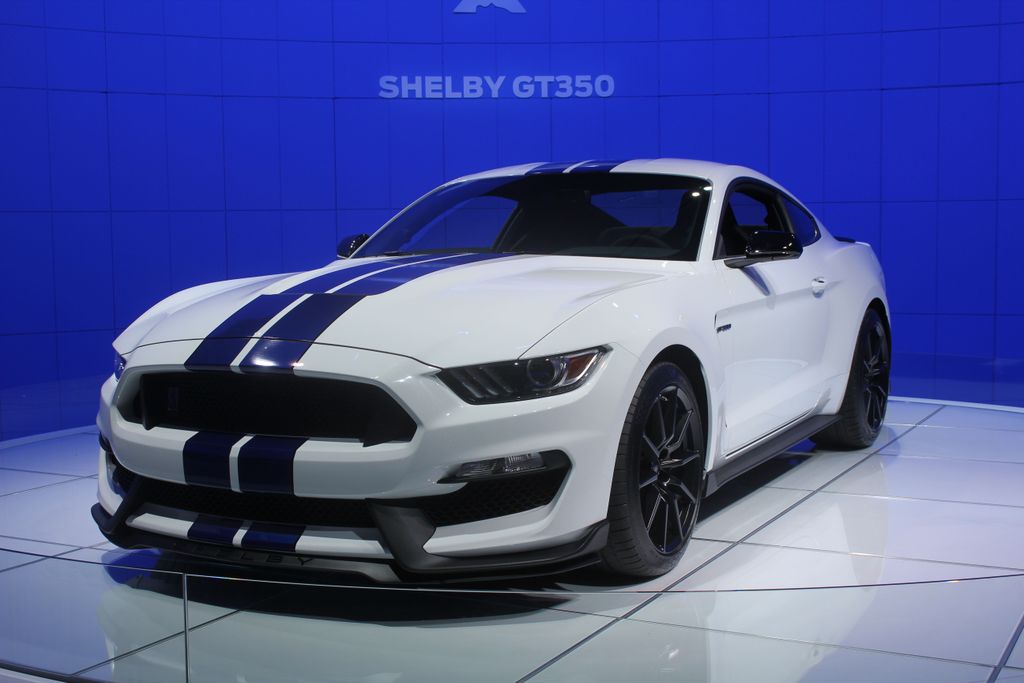
2. **Designed by Race Rules**The fundamental design and engineering choices for the 1965 Shelby GT350 were not simply born from aesthetic preference or raw power ambitions, but were largely dictated by the stringent rules of the SCCA’s B-Production road racing class. These regulations were paramount, shaping the very essence of the car’s development and its ultimate configuration. To qualify for racing, manufacturers had to homologate their vehicles, meaning at least one hundred examples of a given car had to be sold to the public.
Shelby understood the difficulty of selling unadulterated, track-only race cars in such quantities. Furthermore, SCCA rules mandated that a race car’s road-going counterpart needed to retain either the race car’s engine configuration or its suspension setup. Shelby faced a critical decision: modify the engine extensively or focus on the suspension and brakes. He astutely determined that he would encounter fewer warranty issues if the engine was kept closer to stock, thus opting to heavily upgrade the suspension and braking systems.
This strategic choice meant that both the racing and street versions of the GT350 shared the same advanced brakes and suspension components. This clever compliance allowed Shelby’s racing version to incorporate a higher horsepower motor while still being considered “legal” within the SCCA’s definition of a production car. The pressure was immense, with Shelby, backed by Ford, having just five months—from August 1964 to January 1, 1965—to get 100 homologated cars ready. This tight deadline underscored the urgency and the engineering intensity that defined the GT350’s frantic birth, making its early success all the more remarkable.
Read more about: Seriously, What Happened? 13 Legendary Muscle Cars Automakers Just Don’t Build Anymore, But Absolutely Should!

3. **The Iconic Look of Early Models**The visual identity of the inaugural 1965 Shelby GT350 was as striking as its performance, establishing a design language that remains instantly recognizable and revered. Unlike later models which offered a wider palette of options, all 1965 GT350s shared a remarkably consistent and purposeful appearance. They were exclusively Wimbledon White fastbacks, a clean, classic canvas that allowed their performance-oriented modifications to truly stand out.
Accenting this pristine white were bold Guardsman Blue rocker stripes, a distinctive visual cue that immediately broadcasted the car’s Shelby heritage and racing intent. For those seeking an even more aggressive and overtly track-ready look, approximately a quarter of the 562 cars produced that model year were delivered with optional Le Mans stripes. These dramatic Guardsman Blue stripes ran the entire length of the vehicle, from nose to tail, cementing the GT350’s connection to endurance racing and its competitive spirit.
Beyond the signature paint scheme, other design elements reinforced its performance credentials. A fiberglass hood, complete with a functional scoop, hinted at the powerful engine beneath while aiding in engine cooling. Unique wheels provided both aesthetic appeal and enhanced performance, complementing the aggressive stance. Side-exit exhaust pipes completed the look, offering a raw, visceral auditory experience to match the visual aggression. Inside, all 1965 GT350 Mustangs were outfitted with minimalist black interiors, further emphasizing a focus on function over excessive luxury.
Read more about: 2025 SUVs with Full-Size Spares: Your Guide to Uncompromised Preparedness

4. **Race-Inspired Interior**The interior of the early Shelby GT350 was a clear reflection of its racing aspirations, marked by a decisive removal of what was deemed superfluous for track dominance. One of the most significant and defining characteristics of the 1965 GT350’s cabin was the elimination of the rear seat. This wasn’t merely a stylistic choice; it was a direct mandate dictated by the SCCA’s B-Production race class regulations.
To qualify as a sports car under these specific rules, the Mustang, initially conceived as a 2+2, had to shed its passenger-carrying pretensions. In its place, Shelby’s team installed a lightweight fiberglass shelf, which served a dual purpose. Crucially, it provided a secure mounting point for a full-sized spare tire, a necessity for race cars and a practical element for a performance machine. This modification not only helped meet race criteria but also contributed to a marginal weight reduction and a slightly improved weight distribution, albeit minimally.
This minimalist approach underscored the GT350’s purpose-built nature. While standard Mustangs offered the versatility of a rear seat, the Shelby version unapologetically prioritized performance and racing homologation. Even some of the earliest race-spec vehicles, like 5R002 housed at the Shelby American Museum, arrived at Shelby American already stripped of their rear seats, indicating a clear intent from the San Jose plant itself for those designated for competition. The black interior, standard for all 1965 models, further complemented this no-nonsense, functional aesthetic, ensuring that every element inside the car served its role in a high-performance environment.
Car Model Information: 2022 Volvo XC90 T6 Inscription
Name: Shelby Mustang
Caption: 1965 Shelby Mustang GT350
Manufacturer: Unbulleted list
Aka: Unbulleted list
Production: Unbulleted list
Designer: John Chun
Assembly: Unbulleted list
Class: Unbulleted list
Platform: Unbulleted list
Related: Ford Mustang (first generation),Ford Mustang (fifth generation)
Layout: Front-engine, rear-wheel-drive layout
Categories: 1970s cars, 2000s cars, 2010s cars, 2020s cars, All Wikipedia articles written in American English
Summary: The Shelby Mustang is a high-performance variant of the Ford Mustang built by Shelby American from 1965 to 1967 and by the Ford Motor Company from 1968 to 1970.
In 2005, Ford revived the Shelby nameplate for a high-performance model of the fifth-generation Ford Mustang.
Get more information about: Shelby Mustang
Buying a high-performing used car >>>
Brand: Ford Model: Shelby GT350
Price: $35,496 Mileage: 68,149 mi.
Read more about: The Most Memorable Concept Cars from Auto Shows: A Wired Exploration of Automotive Innovation
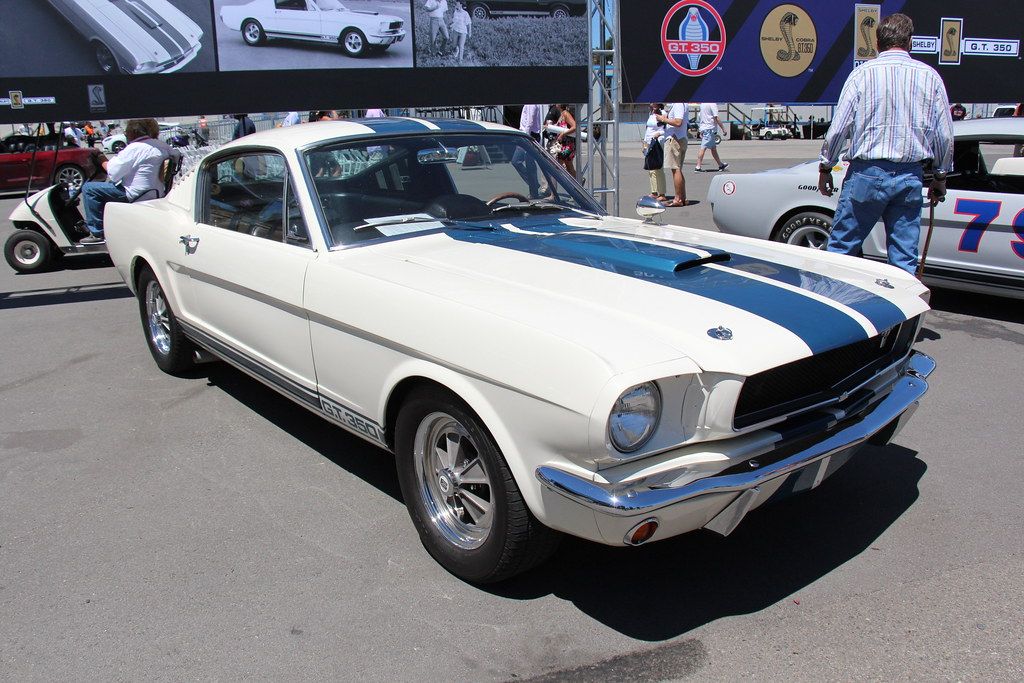
5. **Dramatic Power Boost**The heart of the 1965 Shelby GT350 was the venerable 289-cubic-inch V-8 engine, but it was far from the standard unit found in conventional Mustangs. Shelby’s team undertook significant modifications to transform Ford’s already potent 271-horsepower, 289 cubic-inch V-8 into a true powerhouse, demonstrating their expertise in extracting every ounce of performance. These enhancements were critical in ensuring the GT350 could live up to its “racehorse” billing, despite Shelby’s initial reservations about the Mustang platform.
The modifications began with the induction system, where Shelby’s team outfitted the small-block engine with a high-rise intake manifold. This component was designed to optimize airflow into the cylinders, allowing for a more efficient fuel-air mixture. Complementing this, a larger 725cfm Holley carburetor was installed, capable of delivering a greater volume of fuel and air, further unlocking the engine’s potential for increased power output. This pairing was crucial for the dramatic performance gains that followed.
To ensure the enhanced intake and fueling could breathe effectively, a low-restriction exhaust system was also integrated. This allowed exhaust gases to exit more freely, reducing back pressure and contributing to the overall power increase. The cumulative effect of these meticulously chosen modifications was substantial, resulting in official output numbers of 306 horsepower at 6,000 rpm and 329 pound-feet of torque at 3,400 rpm. This represented a significant jump from the stock 271 hp, immediately asserting the GT350’s dominance on both street and track.
In MotorTrend testing, this formidable power translated into impressive real-world performance for the day. The 2,800-pound car was capable of sprinting from 0 to 60 miles per hour in approximately seven seconds, a blistering figure for the mid-1960s. Its top speed hovered around 140 mph, further cementing the GT350’s reputation as a serious contender in the burgeoning muscle car scene. This dramatic boost in power, coupled with its race-bred suspension, truly made the GT350 an unmatched performer of its era.
Read more about: Seriously, What Happened? The Wild Ride of Engine Downsizing and Why Your Car’s Heart Just Isn’t What It Used To Be
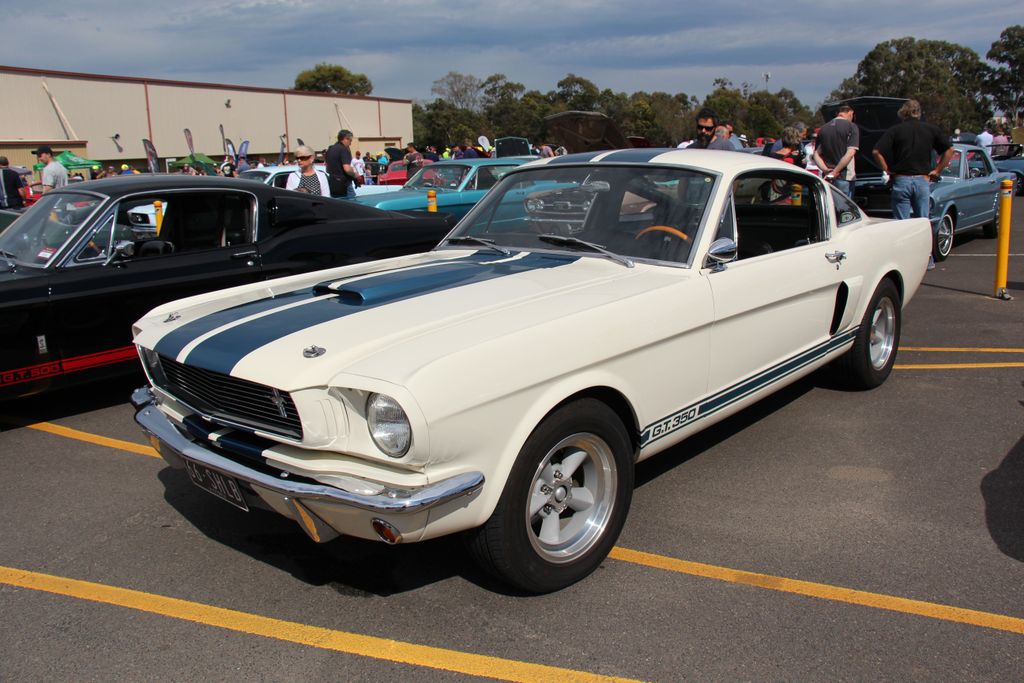
6. **The Shift Towards Greater Civility**While the initial 1965 Shelby GT350 was a stripped-down, unapologetic racing machine, designed with minimal creature comforts to dominate the track, the very nature of its appeal soon broadened. As the Mustang itself gained immense popularity, there was an increasing demand for performance cars that could also offer a degree of everyday usability and comfort. This market shift prompted Shelby American, and subsequently Ford, to consider refining the GT350 without compromising its thrilling performance. The evolution began subtly, adding options that made the car more accessible to a wider range of enthusiasts who sought both speed and a touch of refinement.
Indeed, over subsequent years, the GT350 progressively “traded outright track capability for the sake of on-road civility and greater consumer appeal.” For the 1966 model year, the GT350 began to shed some of its hardcore race-car features. An optional automatic transmission became available, a significant departure from the ’65’s exclusive four-speed manual. A growing roster of available paint options appeared, moving beyond the signature Wimbledon White. Furthermore, certain performance-minded modifications, like the override traction bars and the trunk-mounted battery from the 1965 model, either fell by the wayside or were adapted to be less aggressive, prioritizing a smoother street ride.
By 1967, the Mustang had undergone a significant redesign, and the GT350 followed suit, becoming a larger, more refined vehicle. While still retaining that unmistakable Shelby appearance, the 1967 GT350 offered more creature comforts, aligning with the trend toward a more luxurious performance segment. The engine lineup also saw changes; while the GT350 retained an improved version of the 289-cubic-inch V8, the introduction of the GT500 model brought the powerful 428-cubic-inch V8, further diversifying the Shelby Mustang offering and reinforcing the idea of a performance car with broader appeal. The suspension systems were also reinforced to accommodate the added power and weight, ensuring the GT350’s handling prowess remained intact.
This deliberate move towards a more civilized performance machine was a shrewd business decision, allowing the GT350 to maintain its edge on the street and track while simultaneously captivating a larger audience. It represented a balancing act: honoring the raw, aggressive spirit that defined its inception, yet adapting to the evolving tastes of the American car buyer. This evolution ensured the GT350’s continued relevance and commercial success, solidifying its place in the performance car hierarchy not just as a racer, but as a formidable road car too.
Read more about: Unpacking the Digital Deluge: Simple Secrets to How Social Media Platforms Filter Out Fake News for a Wiser You
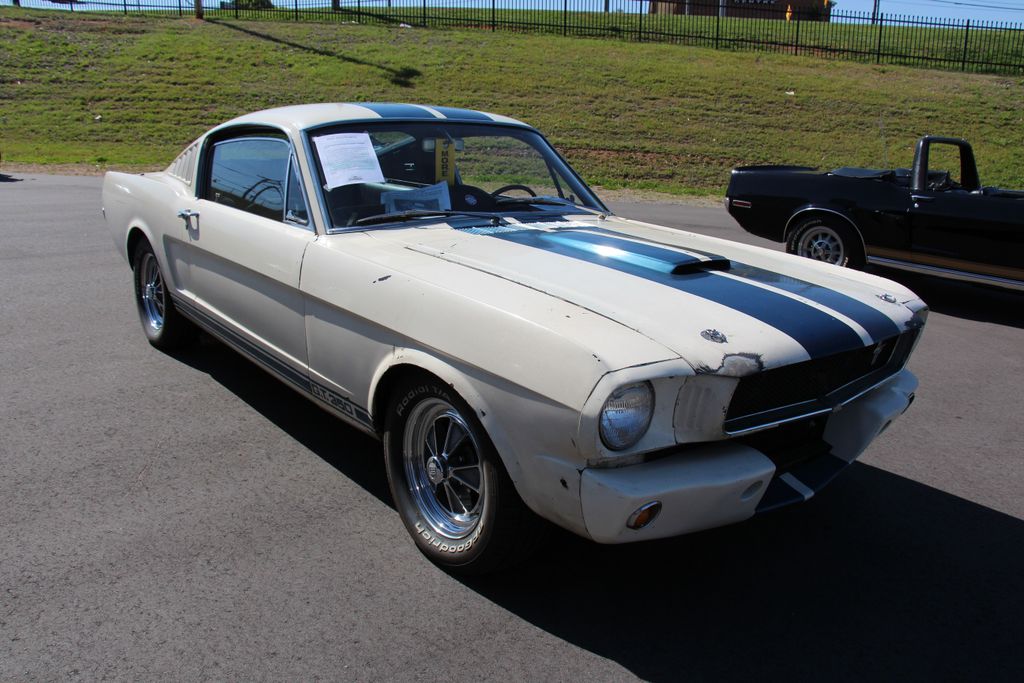
7. **The “Rent-A-Racer” Program**Among the most distinctive and memorable chapters in the Shelby GT350’s history is the peculiar, yet brilliant, “Rent-A-Racer” program. In 1966, an unlikely partnership bloomed between Shelby American and the Hertz Corporation, a collaboration aimed at bringing high-performance Shelby Mustangs to the general public in an unprecedented way. The idea was simple: allow everyday enthusiasts, albeit those with a few extra dollars, to experience the thrill of a GT350 by renting one directly from Hertz car rental agencies. This audacious concept truly democratized access to raw American muscle, making Shelby’s racing prowess available for a weekend escapade or a spirited road trip.
Under this unique program, just over one thousand 1966 Shelby GT350-H Mustangs were added to Hertz’s rental car fleet. These special edition GT350-Hs were largely mechanically identical to the standard 1966 Shelby GT350, ensuring that renters received the full, unadulterated performance experience. However, to distinguish them, the vast majority of these vehicles wore a distinctive black-and-gold livery, which has since become an iconic visual signature. While most were black with gold stripes, a limited number were also available in other striking colors such as Candy Apple Red, Sapphire Blue, Ivy Green, and Wimbledon White, all accented with gold stripes, making them instantly recognizable and adding to their mystique.
Imagine the sheer delight of walking into a Hertz counter and driving away in a Shelby GT350 for a mere “17 bucks a day.” This was an opportunity for enthusiasts to live out their racing fantasies, even if only for a short time, without the significant financial commitment of ownership. It provided an unparalleled taste of what it felt like to command one of the hottest performance cars of the era, offering a visceral connection to the racing heritage that Shelby had so painstakingly built. The program quickly became legendary, not just for the cars it offered, but for the sheer audacity of the concept itself.
Unsurprisingly, such a program, which put high-strung performance machines into the hands of the general public, eventually encountered challenges. Hertz eventually “put the kibosh on the Rent-A-Racer program due to sky-high repair costs,” a testament to how enthusiastically some renters embraced the GT350-H’s capabilities. Despite its relatively short lifespan, the “Rent-A-Racer” program created an unforgettable legend, further embedding the Shelby GT350 into the cultural fabric of American motoring and making it one of the most intriguing and sought-after variants in its history.
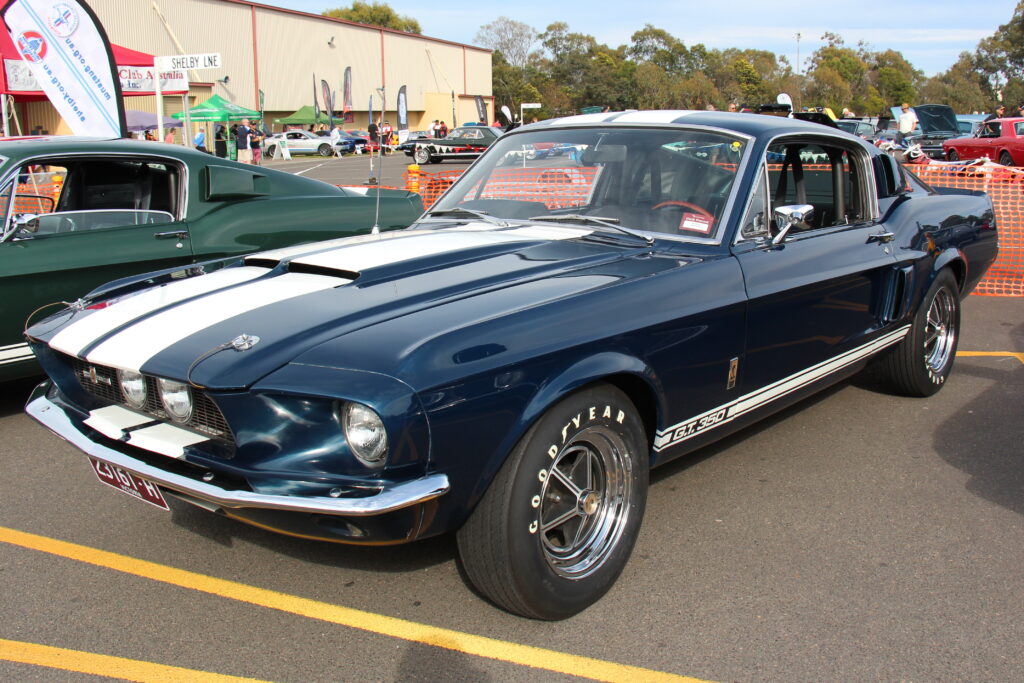
8. **Ford’s Increasing Design Control and Shelby’s Departure**The dynamic partnership between Ford and Carroll Shelby, which birthed the legendary GT350, was instrumental in establishing the Mustang’s performance credentials. However, as the 1960s drew to a close, the nature of this collaboration began to undergo significant transformations. What started as Shelby’s hands-on, almost reluctant, complete overhaul of the Mustang gradually shifted, with Ford assuming an increasingly dominant role in the design, engineering, and overall direction of the Shelby models. This evolution ultimately led to a pivotal moment in the GT350’s history: Carroll Shelby’s eventual disengagement from the project.
By 1968, the Shelby GT350 was no longer the raw, stripped-down racer of its initial incarnation. The Mustang itself had seen further redesigns, and the Shelby versions reflected this, featuring “more aggressive styling, including a redesigned grille, side scoops, and a fresh set of racing stripes.” Beneath the hood, the engine options for the GT350 also evolved, notably shifting to a 302-cubic-inch V8, some of which were limited with a four-barrel carburetor, producing 290 horsepower and 290 lb-ft of torque. While still a formidable performer, Ford was also beginning to offer more luxury options for the GT350, signaling a diversification that moved away from Shelby’s original track-focused vision.
As the decade progressed, Ford’s influence became even more pronounced. “Toward the end of the 1960s, Ford itself had taken over most of the design and styling decisions for the GT350.” This meant less direct involvement from Shelby American in the creative and engineering processes that had initially defined the cars. The shift was undeniable, as the GT350 transitioned from a project born primarily out of Shelby’s racing expertise to one more integrated into Ford’s broader product development strategy. This dilution of Shelby’s direct input ultimately culminated in a decisive moment.
“Shelby broke ties with Ford in the summer of 1969,” marking the end of the original collaboration. Despite Shelby’s departure, Ford continued to license the Shelby name for the 1969-1970 models, underscoring the brand’s immense value and recognition. During these final years, the GT350, now powered by a 351-cubic-inch V8 producing 290 hp and 390 lb-ft of torque, had become “more of a luxury performance vehicle than the raw, track-focused car of its early years.” This period closed the first chapter of the GT350’s storied life, a testament to how even the most iconic partnerships can evolve and eventually conclude, paving the way for new eras.
Car Model Information: 2020 Ford Shelby GT350 Base
Name: Shelby Mustang
Caption: 1965 Shelby Mustang GT350
Manufacturer: Unbulleted list
Aka: Unbulleted list
Production: Unbulleted list
Designer: John Chun
Assembly: Unbulleted list
Class: Unbulleted list
Platform: Unbulleted list
Related: Ford Mustang (first generation),Ford Mustang (fifth generation)
Layout: Front-engine, rear-wheel-drive layout
Categories: 1970s cars, 2000s cars, 2010s cars, 2020s cars, All Wikipedia articles written in American English
Summary: The Shelby Mustang is a high-performance variant of the Ford Mustang built by Shelby American from 1965 to 1967 and by the Ford Motor Company from 1968 to 1970.
In 2005, Ford revived the Shelby nameplate for a high-performance model of the fifth-generation Ford Mustang.
Get more information about: Shelby Mustang
Buying a high-performing used car >>>
Brand: Ford Model: GT350
Price: $62,493 Mileage: 27,620 mi.
Read more about: Unearthing the Mustang’s Hidden History: 14 Surprising Facts Even Die-Hard Fans Might Not Know
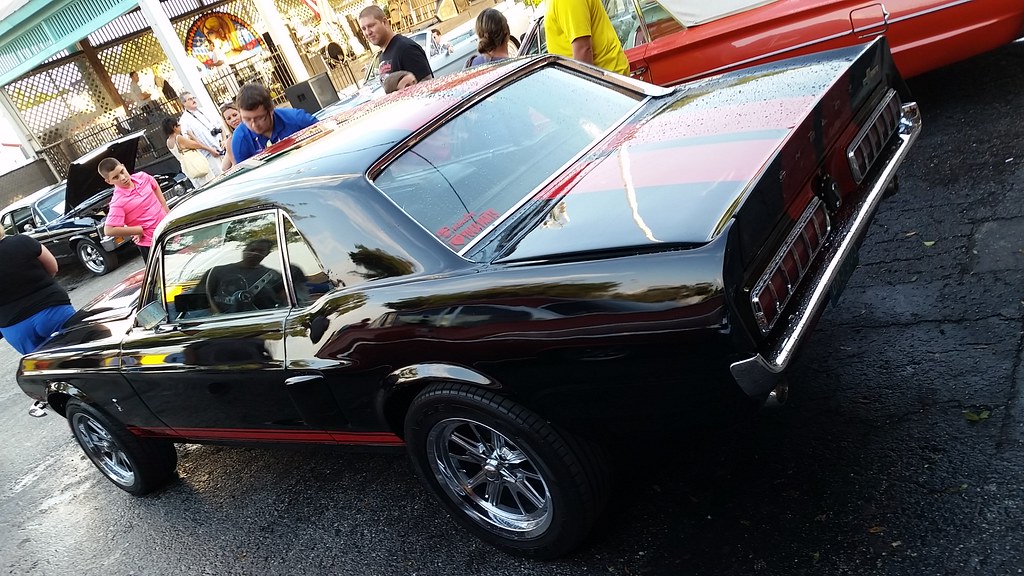
9. **Cultural Impact and Celebrity Endorsements**The Shelby GT350’s influence extended far beyond the roar of the racetrack and the rumble of the streets; it deeply permeated American culture, becoming a symbol of rebellion, freedom, and raw power. This iconic status was not solely built on its performance credentials but was significantly bolstered by its appeal to Hollywood and various celebrity figures. The GT350 transcended its mechanical origins, transforming into a cultural icon that resonated with the aspirations of a generation, solidifying its place in the public imagination as more than just a car.
A prime example of this intertwining with celebrity culture is the enduring association of the Mustang, and by extension the Shelby GT350, with Steve McQueen. Known for his intense love of fast cars and racing, McQueen’s persona perfectly embodied the aggressive, high-performance nature of the Shelby. While McQueen famously drove a 1968 Mustang GT fastback in the legendary film *Bullitt*, his general “cool factor” and well-documented admiration for Shelby Mustangs helped to cement the GT350’s revered place in popular culture. His rugged, independent image perfectly aligned with the spirit of a car built for performance and daring.
The GT350’s magnetic appeal wasn’t limited to the silver screen or a single actor. Celebrities from various fields—including actors, athletes, and musicians—were drawn to its unique blend of style, speed, and exclusivity. Owning a Shelby GT350 quickly evolved into a powerful status symbol, a tangible connection to a world synonymous with speed, power, and success. It represented an aspirational lifestyle, where driving excitement and a bold statement were paramount, allowing owners to connect with the automotive elite.
This broad cultural adoption, from its appearances in movies to its endorsement by high-profile figures, significantly amplified the GT350’s legendary status. It became an integral part of the narrative of American automotive excellence, symbolizing a golden era of muscle cars and unrestricted performance. The GT350 was not merely admired for its engineering prowess; it was beloved for what it represented: a slice of pure American automotive passion and an unforgettable mark on the cultural landscape.
Read more about: A Legacy Forged in Iron and Innovation: The Extraordinary Life of the Late George Foreman, From Olympic Gold to Entrepreneurial Empire
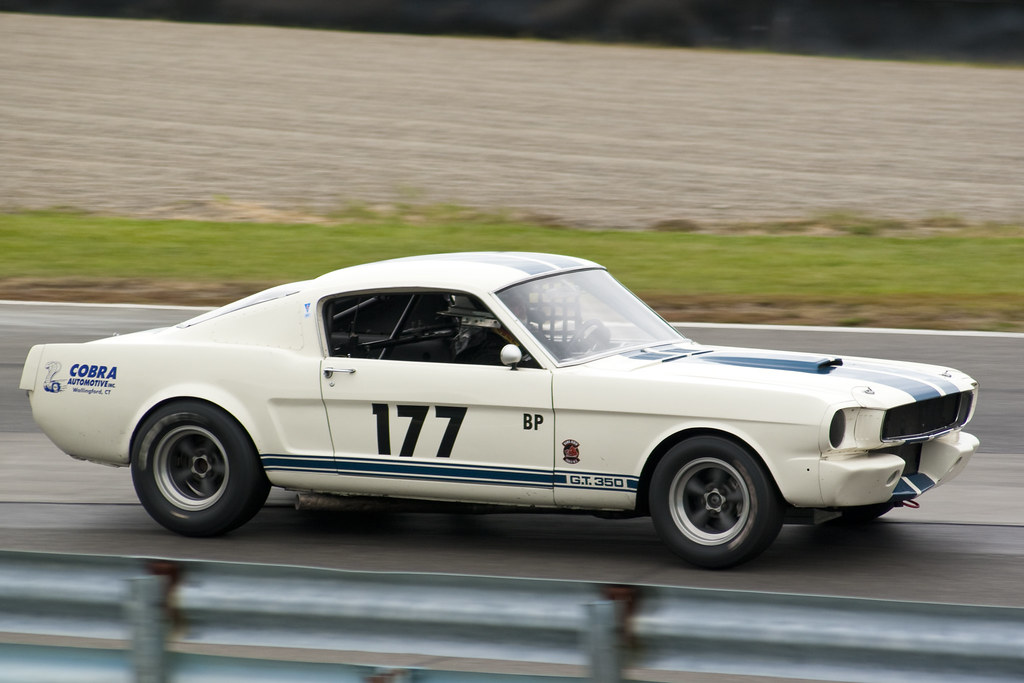
10. **An Enduring Legacy and Collectibility**The Shelby GT350 is not merely a relic of a bygone era; it is an enduring icon whose legacy resonates powerfully in the automotive world even today. Its status as one of the most beloved American cars of all time is well-deserved, forged by an unmatched blend of blistering performance, a triumphant racing pedigree, and profound cultural influence. From its inception, delivering impressive acceleration and exceptional handling, to its domination of the SCCA B-Production class and the Trans-Am series, the GT350 carved out a unique place in motorsports history, establishing itself as a true benchmark for performance.
Today, the original Shelby GT350 models, particularly the early 1965 iterations, are highly sought-after collectibles, commanding astronomical prices among discerning enthusiasts and investors. Shelby produced just over 7,000 GT350 and GT350Rs during their five-year production run, making well-preserved, all-original examples incredibly rare. “Well preserved, all-original 1965 GT350s—the rarest road car of the bunch—can fetch half a million dollars at auction,” a testament to their scarcity and historical significance. The even rarer GT350R race cars, with fewer than 40 produced for that model year, are among “the most valuable Mustangs in existence,” representing the pinnacle of Shelby’s racing ambition.
While the 1965 models represent the pinnacle of collectibility, later road-going GT350s from 1966 to 1969 also hold significant value, albeit a more “reasonable proposition for prospective buyers.” Yet, even these examples can easily venture “well into six-figure territory for a showroom condition example,” highlighting the enduring appreciation for the Shelby nameplate and the exceptional quality of these machines. This sustained demand underscores the GT350’s lasting appeal, not just as a piece of history, but as a tangible investment in automotive heritage.
The GT350’s legacy is further cemented by its continued production under license well into the 21st century. Ford, recognizing the power and prestige of the name, continued to produce the GT350 under the Shelby License from as late as 2015 through 2020. This revival, decades after the original run, speaks volumes about the enduring impact and timeless appeal of the GT350. It symbolizes a new chapter for the Mustang brand, yet always harks back to the original vision of Carroll Shelby – creating a formidable track machine that could also thrill on the street.
Read more about: Why the Old-School Pontiac Grand Prix is Still a Hot Buy for Enthusiasts Today
The classic Ford Mustang GT350 stands as a monument to American ingenuity, performance, and an unyielding passion for speed. From its initial reluctant birth to its widespread cultural impact and its current status as a priceless collectible, the GT350’s journey is a captivating narrative of automotive excellence. It remains, unequivocally, a powerhouse of muscle, a testament to Carroll Shelby’s ability to turn a “mule” into a magnificent “racehorse,” and a cherished icon that continues to inspire awe and admiration among generations of car enthusiasts worldwide. Its legend, like the roar of its V8, will undoubtedly echo for eternity, reminding us all of an era when horsepower ruled and a singular vision redefined what a performance car could be.



